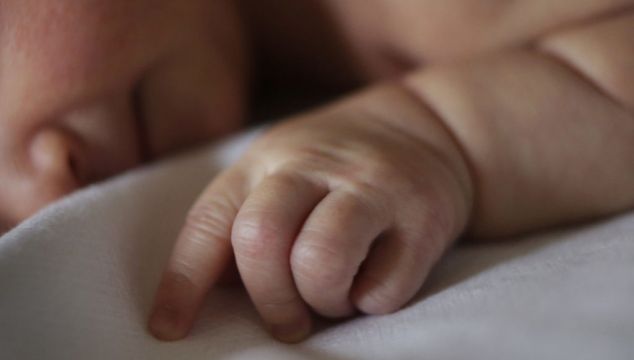Ireland’s birth rate has dropped sharply over the past decade to reach its lowest level in over 60 years in 2022, according to new EU figures.
The fertility rate in the Republic – which was the highest in the EU for most of the period between 1998 and 2011 – is now just above the EU average.
New figures published by the European Commission have highlighted a dramatic decline in fertility rates in the Republic since 2010 including a significant annual drop of 13.5 per cent in 2022.
It places Ireland with the ninth-highest birth rate in the EU – down from fourth place just 12 months earlier.
Ireland had enjoyed a surge in births in 2021 when the fertility rate reversed a downward trend and reached a five-year high which was attributed to a baby boom linked to the Covid-19 pandemic.
However, the latest figures show the birth rate in the Republic fell from 1.78 live births per woman in 2021 to 1.54 in 2022 – compared to the EU average of 1.46.
In 2021, a total of 60,553 babies were born in Ireland but the figure dropped to 54,411 the following year.
The birth rate had peaked in Ireland this century in 2008 and 2009 at 2.08 live births per woman compared to the EU average at the time of 1.57.
In contrast, the birth rate in Ireland in 1960 was 4.07 live births per woman but the figure has declined steadily over subsequent decades due to various factors including increased participation by females in the labour force and increased availability of contraception.
The 13.5 per cent reduction in the birth rate in Ireland in 2022 comes as the annual number of babies born in the EU’s 27 member states also hit a record low.
The number of annual births in the EU fell below 4 million for the first time on record in 2022 with 3.88 million births recorded – over half the annual total of 60 years ago when it was just under 7 million.
France currently has the highest fertility rate in the EU with 1.79 live births per woman followed by Romania (1.71), Bulgaria (1.65) and the Czech Republic (1.64).
In contrast, the lowest birth rates are found in Malta with 1.08 live births per woman, Spain (1.16) and Italy (1.24).
All fertility rates in the EU are below the 2.1 live births per woman estimated to be required to maintain constant population levels.
The steady decline in the EU’s population is likely to raise fresh concerns about the bloc’s demographics with ageing populations, falling birth rates and labour shortages.
The issue is also likely to lead to calls for immigration to be used as a solution to address falling populations.
The latest figures also show that women in the EU are becoming mothers later in life.
The average age of all women at childbirth rose from 29.0 years in 2001 to 31.1 years in 2022 with Irish women having the oldest average at 33.1 years – its highest level in the past decade.
The same trend is also evident for the age of first-time mothers, with the average increasing from 28.8 in 2013 to 29.7 in 2022.
The average age of a woman at the birth of her first child in Ireland in 2022 was 31.5 years – the 3rd highest after Italy and Spain.
The share of children born to foreign-born mothers in the EU in 2022 was 22 per cent.
In Ireland, the proportion of children born in 2022 to non-native nationals was 24.3 per cent – the 10th highest rate in the EU.







